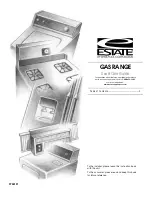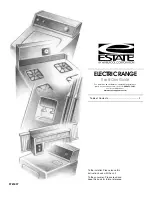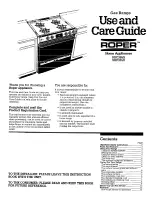
Baking
The following settings are recom-
mended for baking:
– Fan Heat
D
– Conventional
A
Baking tins and dishes
For the best baking results make sure
that you chose baking tins or dishes of
a
material
suitable for the particular
heating system.
–
"Fan Heat
D
"
Most types of heat-resistant tins or
dishes are suitable, including thin-
walled and bright, non-reflective met-
al moulds.
–
"Conventional
A
"
The following baking tins give an
evenly browned result:
Dark metal or enamel tins with a matt
finish are preferable. Heat resistant
glass or thermoplastic trays dishes
can be used.
Avoid thin-walled and bright, non-re-
flective metal moulds. These will give
uneven browning results.
Fan Heat
D
Several levels can be used at the same
time for baking. The recommended po-
sitions are:
1 tray = 1st runner from the bottom
2 trays = 1st and 3rd runners from
the bottom
3 trays = 1st, 2nd and 5th runners
from the bottom
When baking moist biscuits, cakes
or bread, do not bake on more than
two levels.
Remember to remove the roasting
(grease) filter from in front of the fan
opening. Otherwise the baking time
will be longer.
With the "Fan Heat
D
" setting
lower
baking temperatures
are needed than
with the "Conventional
A
" setting. See
the baking charts.
Conventional
A
Avoid thin-walled and bright, non-re-
flective metal moulds. These will
give uneven browning results.
Pre-heat
the oven
only
for:
– cakes / biscuits with a very short bak-
ing time, (up to approx. 30 minutes),
– victoria sponge and similar mixtures.
– bread made with dark flour.
Use
Shelf position
1
or
2
.
Baking
32
















































